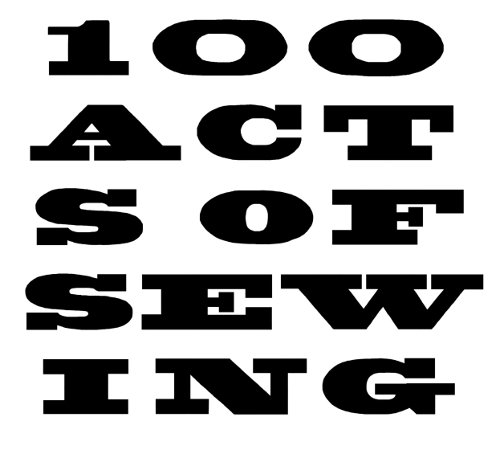statement
What began as a personal challenge to make 100 dresses in a year, has developed into a larger exploration of praxis. It functions in three parts: display, demonstration, and instruction. The purpose is to not only present the product of a year’s labor, but to also expose the process, and in turn educate the audience. This exposure acts as an impetus, allowing people to recognize that they can sew clothes, an awareness that simultaneously creates conscious consumers, offers a connection to the past, and provides a means of reclaiming personal style.
All aspects of creating clothing require skill, and whether it is making cloth, dyeing, printing, or sewing, these are skills our society has largely lost or pushed offshore. The term, fast fashion, aligns cheaply-made clothes with fast food. Specifically, the ways in which it is bad for our collective health. In the United States, we buy more clothes and wear them for less time. Shopping is often solely a means of fulfillment. We do not see nor often think of the real cost our clothing consumption has for the laborers or the environment. When we know how to sew with our own hands, we can make and remake and make well. We become more discerning of our goods and create the possibility of rejecting mass produced items. When we possess this skill, when we realize the time and physical labor that goes into making a garment from start-to-finish, we are more thoughtful about what we purchase, are more cognizant about production, and we are ultimately less driven by the forces of consumption and accumulation.
Making clothing is a conscious choice; it is an investment of time over convenience. The creation of a functional garment, engenders self-sufficiency and happiness. Since it is perilous to compare what one makes to the immutable perfection of store-bought, in sewing for oneself it is the work itself, and the recognition of flaws and gradual achievement of better skills as part of that work, that produces satisfaction. It is traditionally a woman’s craft and is associated with the domestic sphere. The practice is a continuation of a millennium’s-long lineage, one that creates an interdependence between seasoned practitioners and new enthusiasts, with room for celebrating each act of making from simple to complex. Workshops held in conjunction with exhibits, teach participants how to make a dress. The pattern consists of just four seams and a hem. The simplicity of the design makes it accessible, meaning people leave with an identifiable end-product and an important sense of accomplishment. This project is thus a collaboration with the people who see it and the people who are taught, starting them on the road to creating their own clothes. I hope to inspire people to use their sewing machines, or at least think about who used a sewing machine to create the garments they wear.
Clothing is an elemental part of day-to-day life, offering both protection and adornment. It is also bound up with ideas of culture and the body. Alternately encouraged by and excoriated by the media, women in the US forge a deep discontent with their bodies that leads many on a constant search for clothes that alter appearance. In response to an ever-varying trend to either conceal or reveal, women go through a series of manipulations of their bodies through clothing under the rubric of “fashion.” Sewing is a way to return to a more primary mode of expression, which a person can choose to follow or create their own style. Within just a single dress pattern, there are endless permutations through the variables of fabric, be it fiber content, color, or print. The resulting garment is unique and acts to place a stamp of individuality in a uniform world: it is a display of a person’s skill as well as their taste. Handmade has an authenticity, where each choice is deliberate, from how cloth is cut to the color of thread. In this way a bespoke garment becomes a truly reflective canvas.
Sewing clothes creates value through the appreciation of skill, the awareness of tradition, and the creation of agency. In Das Kapital, Karl Marx writes “He who satisfies his own need with the product of his own labour admittedly creates use values, but not commodities.” We exist in a world of hyper-commodification where sewing can act as a balm. When we sew our own clothes, we become mindful of the time and labor that goes into each garment and the cost that piece work and production line assembly must have on the human body. In this way, the education of the audience ultimately comes from the de-alienation of the process.
